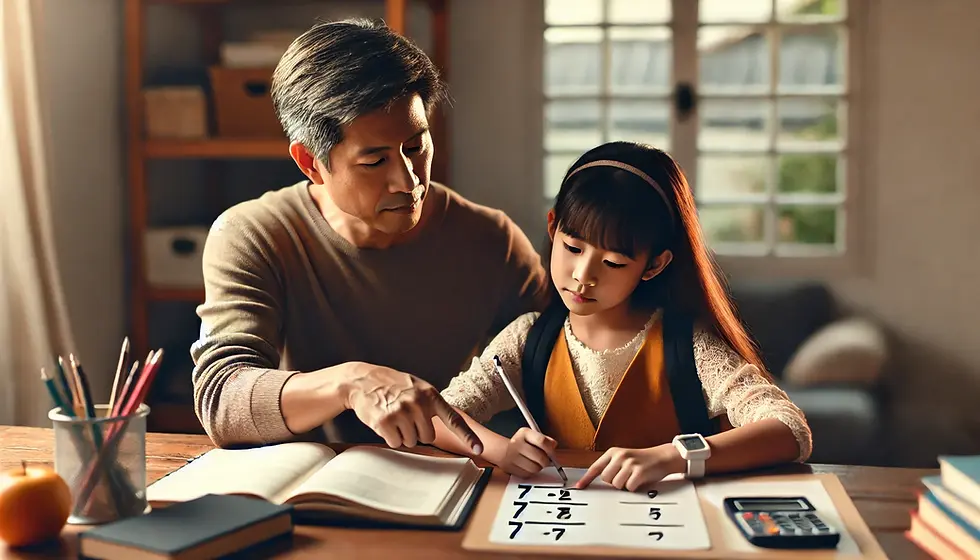Helping Your Child Master Fractions: A Guide for Parents of Children with Dyscalculia
- Mr. Dalton

- Apr 14
- 3 min read

In Singapore, where mathematics is a cornerstone of education, parents may feel concerned when their child struggles with numbers, especially if they have dyscalculia. Dyscalculia affects a child’s ability to understand numerical concepts, making abstract topics like fractions particularly challenging. Fortunately, with the right tools and approaches, you can support your child in building confidence and competence in math. Visual aids and hands-on activities are powerful ways to make fractions more accessible, and this guide offers practical strategies to help your child succeed.
Using Graphical Representations to Support Learning
Visual aids are invaluable for illustrating complex concepts, especially for students with dyscalculia. Since this learning difference impacts number sense, traditional teaching methods often fall short. A multisensory, structured, and patient approach is essential—particularly when teaching abstract concepts like fractions. By using tools like everyday objects, blocks, and paper folding, parents can help their child grasp fractions in a concrete and engaging way.
Start with Real-Life Examples (Concrete Understanding)
Using everyday objects to show fractions helps children connect math to their world, making it less intimidating:
Pizza slices (½, ⅓, ¼)
Measuring cups (e.g., ½ cup of water)


How to Teach:
Show a whole circle or bar, then split it into halves, thirds, fourths, etc. This visual representation helps your child see fractions as parts of a whole.
Ask: “If this is 1 whole, how much is one piece if we split it into 4?” Questions like this encourage critical thinking without overwhelming your child.
Have your child physically place pieces together to see equivalencies (e.g., 2/4 = 1/2). Hands-on activities reinforce understanding and make learning fun.
LEGO or Unifix Cubes (Building Fractions)
Blocks like LEGO or Unifix cubes are excellent for teaching fractions because they allow children to manipulate and compare parts of a whole.

How to Teach:
Assign a value to a block (e.g., a tower of 6 blocks = 1 whole).
Ask: “If 6 blocks = 1 whole, what is 3 blocks?” (Answer: ½). This helps your child visualize fractions as portions of a set.
Compare different fractions by stacking blocks. For example, stacking 2 blocks next to 4 blocks shows that 2/4 equals 1/2, reinforcing equivalence in a tangible way.
Teaching Fractions with Paper Folding
A fraction is part of a whole, and paper folding is a simple yet effective way to demonstrate this concept to your child.
Activity:
Give your child a full sheet of paper.
Say: “This is our whole. Let’s divide it into equal parts!” This sets the stage for understanding division in a clear, visual manner.

Teach Halves (½) – First Fold
Fold:
Fold the paper in half (match edges perfectly to ensure accuracy).
Unfold and trace the crease with a marker to highlight the division.
Label one side ½ and the other ½. This helps your child see that two equal parts make up the whole.
By repeating this activity with different folds (e.g., thirds or fourths), your child can gradually build confidence in understanding fractions.
Empowering Your Child’s Math Journey
As a parent in Singapore, you play a vital role in helping your child overcome the challenges of dyscalculia. By incorporating visual aids and hands-on activities like the ones described, you can make fractions less daunting and more approachable. These strategies not only build your child’s math skills but also foster a sense of achievement and confidence. With patience and consistent practice at home, you can help your child unlock their potential in mathematics and pave the way for future success.




Comentários